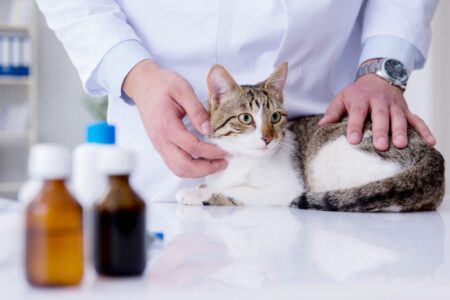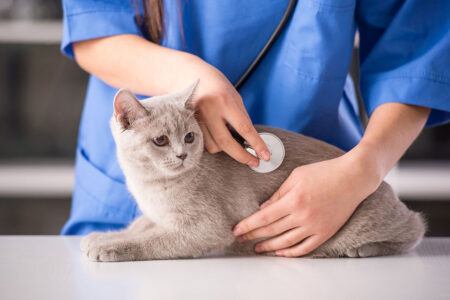Kidney disease is a common ailment that affects cats of all ages and breeds. It is a chronic condition that gradually impairs the function of the kidneys and can eventually lead to kidney failure. As a cat owner, it can be heartbreaking to watch your beloved feline companion suffer from this debilitating disease. At some point, you may be faced with the difficult decision of whether or not to euthanize your cat.
This article will explore the signs and symptoms of advanced kidney disease in cats and the factors to consider when deciding to euthanize. It is important to understand the progression of the disease and the quality of life your cat may experience before reaching this end-of-life decision.
Kidney Disease In Cats When To Euthanize
Kidney disease in cats, also known as feline kidney failure, is a serious condition that affects the kidneys’ ability to filter and remove waste products from the blood. It can be acute (sudden onset) or chronic (long-term) and is more common in older cats.
There are two types of feline kidney disease: acute and chronic. Acute kidney disease can be caused by factors such as dehydration, ingestion of a toxic substance, or urinary blockage. Chronic kidney disease, on the other hand, is usually caused by old age or long-term health conditions, such as high blood pressure or diabetes.
Deciding when to euthanize a cat with kidney disease can be a difficult and emotional decision for pet owners. It is important to work closely with your veterinarian to assess your cat’s quality of life and discuss treatment options.
In general, euthanasia may be considered if:
- The cat is no longer responding to treatment and is not improving.
- The cat is experiencing severe and unmanageable pain.
- The cat is no longer able to eat or drink.
- The cat is unable to use the litter box or keep itself clean.
- The cat has lost a significant amount of weight and is extremely weak and debilitated.
- The cat is showing severe neurological symptoms.
- The owner is no longer able to provide the necessary care and support for the cat.
- The cat’s quality of life is significantly diminished, with no hope for improvement.
How Long Can A Cat Live With Stage 2 Kidney Disease?
Cats with stage 2 kidney disease can generally live for several years with proper treatment. During stage 2, the kidneys are still able to filter waste from the blood, but they are working at reduced capacity. This stage is considered to be a “mild to moderate” stage of the disease.
How long can a cat live with kidney failure without treatment?
Untreated kidney failure in cats is a fatal condition, and without treatment, most cats will not live for more than a few weeks. In some cases, cats may survive for a few months, but their quality of life will be poor.
What Is Kidney Failure In Cats?
Kidney failure in cats, also known as renal failure, is a common health condition where the cat’s kidneys are no longer able to properly filter and eliminate waste products from the body. This can lead to a buildup of toxins in the blood and imbalances in important nutrients and electrolytes. Kidney failure can be acute, meaning it occurs suddenly, or chronic, meaning it develops gradually over time. Acute kidney failure can sometimes be reversible with prompt treatment, while chronic kidney failure is typically a progressive, irreversible condition. This condition can be life-threatening if not managed properly.
SEE ALSO: Fishing Dog Names: 200 Best Picks
Cat Kidney Disease Meowing
Kidney disease in cats can cause excessive vocalization, also known as “kidney yowling.” This is due to a build-up of toxins in the body, which can cause neurological symptoms such as confusion, irritability, and anxiety. Kidney yowling can be distressing for both cats and their owners, and it may occur at any time of day or night. In some cases, kidney yowling may be the first sign that a cat has kidney disease, so it is important to take your cat to the veterinarian if you notice this behavior.
Stages Of Kidney Failure In Cats
- Early Stage: In this stage, there may be slight changes in kidney function, but the cat may not show any symptoms. The kidneys may still be able to filter waste products, but there is some damage to the organ.
- Mild Kidney Insufficiency: In this stage, the kidney’s ability to filter waste products is reduced, and symptoms such as increased thirst and urination, weight loss, and decreased appetite may be noticed.
- Moderate Kidney Insufficiency: As the kidney function continues to decline, more noticeable symptoms may occur, including dehydration, vomiting, and changes in coat appearance.
- Severe Kidney Insufficiency: At this stage, the kidneys are significantly damaged, and the cat may experience severe symptoms such as excessive vomiting, weight loss, anemia, and weakness.
- End-Stage Kidney Failure: This is the final stage of kidney failure where the kidneys are functioning at less than 15%. The cat may have difficulty breathing, severe weight loss, and may be in a state of the overall decline.
Causes Of Kidney Failure In Cats
- Chronic Kidney Disease (CKD): This is the most common cause of kidney failure in cats. It is a progressive disease in which the kidneys gradually lose their ability to filter waste products from the blood. The exact cause of CKD is often unknown, but it is believed to be due to a combination of genetic and environmental factors.
- Age: As cats age, their kidneys become less efficient in filtering waste products from the blood. This natural decline in kidney function is a common cause of kidney failure in older cats.
- Infections: Bacterial, viral, or fungal infections can cause damage to the kidneys and lead to kidney failure. These infections can be acquired from contaminated food, water, or soil, or through contact with other infected animals.
- Urinary Tract Obstruction: When a cat is unable to urinate, it can lead to a buildup of toxins in the body, which can damage the kidneys. Common causes of urinary tract obstruction in cats include bladder stones, urinary blockages, and tumors.
- Toxins: Certain toxins found in household products, plants, and medications can cause kidney damage and lead to kidney failure in cats. These include antifreeze, cleaning products, lilies, and human medications like ibuprofen and acetaminophen.
- Dehydration: Cats can become dehydrated due to various reasons such as not drinking enough water, vomiting, diarrhea, or kidney disease. Dehydration can cause a decrease in blood flow to the kidneys, which can lead to kidney failure.
- Trauma or Injury: A severe injury or trauma to the kidneys can damage the kidney tissues and impair their function. This can lead to acute kidney injury or even permanent kidney failure.
- Genetics: Some breeds of cats, such as Persians, Siamese, and Abyssinians, are more prone to developing kidney disease. This may be due to genetic factors that predispose them to kidney problems.
- Cancer: Certain types of cancer, such as lymphoma and leukemia, can spread to the kidneys and cause damage, leading to kidney failure.
- Other Medical Conditions: Conditions such as high blood pressure, heart disease, and diabetes can also increase the risk of kidney failure in cats. These conditions can affect the blood flow and oxygen supply to the kidneys, leading to damage over time.
Symptoms Of Kidney Failure In Cats
- Decreased appetite and weight loss
- Increased thirst and frequent urination
- Vomiting and diarrhea
- Lethargy and weakness
- Poor coat condition and dehydration
- Bad breath or ammonia-like odor in breath
- Swollen abdomen or bloating
- Pale gums or tongue
- Difficulty urinating or straining in the litter box
- Changes in behavior or personality
- Tremors or seizures
- Decreased grooming habits.
Diagnosing Kidney Failure In Cats
Kidney failure in cats is often diagnosed through a combination of blood tests, urine tests, and imaging studies. A complete blood count (CBC) and chemistry panel can reveal signs of kidney disease, such as increased levels of urea nitrogen and creatinine in the blood. A urinalysis can reveal high levels of protein in the urine, which is another sign of kidney failure. Imaging studies, such as X-rays or ultrasounds, can help to identify any abnormalities in the kidneys. In some cases, a biopsy of the kidneys may be necessary to confirm the diagnosis.
Treatments for Kidney Failure In Cats
- Renal Diet: A specialized diet that is low in protein and phosphorus and contains high-quality protein sources can help reduce the workload on the kidneys and slow the progression of kidney disease.
- Fluid Therapy: Dehydration is a common symptom of kidney failure, and fluid therapy can help replace lost fluids and electrolytes and improve overall hydration.
- Medications: Depending on the underlying cause of kidney failure, your veterinarian may prescribe medications to help manage symptoms and slow the progression of the disease. These may include antibiotics, anti-inflammatory drugs, and blood pressure medications.
- Phosphate Binders: These medications bind to excess phosphorus in the body and prevent it from being absorbed by the kidneys, reducing the workload on the kidneys.
- Anti-Urinary Incontinence Medications: If your cat is experiencing incontinence as a result of kidney failure, your veterinarian may prescribe medication to help control urine leakage.
- Diuretics: Used to help remove excess fluid from the body, diuretics can help reduce the workload on the kidneys and improve kidney function.
- Subcutaneous Fluids: In more advanced cases of kidney failure, subcutaneous fluids may be necessary to help keep your cat hydrated and maintain proper electrolyte balance.
- Dialysis: In some cases, when kidney function has deteriorated significantly, dialysis may be recommended to filter the blood and remove waste products. This is a more invasive and costly treatment option and is usually reserved for severe cases of kidney failure.
- Kidney Transplant: For cats with severe kidney failure, a kidney transplant may be an option. This involves surgically transplanting a healthy kidney from a donor cat into your cat.
What Is The Life Expectancy Of A Cat With Kidney Failure?
The life expectancy of a cat with kidney failure will vary depending on several factors, including the stage of the disease, the cat’s age, and the severity of the symptoms. In general, the earlier the disease is diagnosed and treated, the better the outcome for the cat. Cats in the early stages of kidney failure may live for several years with proper treatment.
How To Make A Cat With Kidney Failure Comfortable
- Provide a Cozy and Clean Environment: Cats with kidney failure may feel weak and uncomfortable, so it’s important to create a warm and cozy space for them. Make sure their bed or resting area is clean and soft, providing them with a comfortable place to rest.
- Keep Them Hydrated: Kidney failure can lead to dehydration, so it’s important to encourage your cat to drink water regularly. You can also add wet canned food or water to their dry food to increase their fluid intake.
- Monitor Their Diet: A special diet is crucial for cats with kidney failure. Talk to your veterinarian about a suitable diet plan that is low in protein and phosphorus, as these nutrients can be hard for a cat’s kidneys to process.
- Follow a Medication Plan: Your cat may require medication to manage their kidney failure. It’s important to follow your veterinarian’s instructions and administer the medication as prescribed for your cat’s comfort and well-being.
- Provide Easy Access to Litter Box: Cats with kidney failure may have trouble getting around, so make sure their litter box is easily accessible. This will also help prevent accidents and discomfort.
- Keep Them Clean: Regularly grooming your cat can help keep them clean and comfortable. Pay special attention to their rear end, as cats with kidney failure may have difficulty grooming themselves.
- Monitor Their Temperature: Cats with kidney failure may have trouble regulating their body temperature. Keep them comfortable by providing a warm spot for them to rest, and watch for signs of overheating or shivering.
- Show Them Love and Affection: Cats with kidney failure may feel weak and vulnerable, so it’s important to provide them with extra love and affection. Spend time cuddling and playing with them to keep their spirits up.
- Watch for Changes: Keep an eye on your cat’s behavior and any changes in their condition. Contact your veterinarian if you notice any concerning symptoms, such as decreased appetite, vomiting, or changes in urination habits.
- Consider Hospice Care: If your cat’s kidney failure is advanced and cannot be treated, you may want to consider hospice care. This can provide them with comfort and pain management in their final days. Consult with your veterinarian about the best options for your cat’s specific needs.
What Not To Feed A Cat With Kidney Disease?
- High phosphorus foods: Cats with kidney disease need to limit their intake of phosphorus, as it can worsen their kidney function. Avoid feeding your cat foods that are high in phosphorus such as liver, cheese, egg yolks, and dairy products.
- Foods with a high moisture content: Cats with kidney disease tend to be more dehydrated, so it is important to feed them foods with a high moisture content. Avoid feeding your cat dry food, and instead, opt for wet or canned food.
- Foods high in sodium: Sodium, or salt, can be harmful to cats with kidney disease. Avoid feeding your cat foods that are high in sodium, such as processed or canned meats.
- Foods with additives: Cats with kidney disease can be more sensitive to certain additives and preservatives commonly found in commercial pet foods. Avoid feeding your cat foods with artificial colors, flavors, and preservatives.
- Raw or undercooked meat: Raw or undercooked meat may contain harmful bacteria that can be especially dangerous for cats with kidney disease. Always fully cook any meat before feeding it to your cat.
- High protein foods: While protein is an important part of a cat’s diet, too much protein can put strain on the kidneys. It is best to limit your cat’s intake of high-protein foods like beef, chicken, and fish.
- Foods with excessive amounts of vitamin D: Vitamin D is important for overall health, but too much can be harmful to cats with kidney disease. Avoid feeding your cat foods that are high in vitamin D, such as salmon and tuna.
- Grains: Cats do not have a natural need for grains in their diet, and they can be difficult for cats with kidney disease to digest. Avoid feeding your cat foods with high levels of grains, such as wheat, corn, and soy.
- Fruits and vegetables: While fruits and vegetables can be a healthy addition to a cat’s diet, they are not necessary for cats with kidney disease. Some fruits and vegetables, such as grapes and onions, can be toxic to cats. Consult with your veterinarian before adding any fruits or vegetables to your cat’s diet.
- Foods high in fat: Too much fat in a cat’s diet can put a strain on their kidneys. Avoid feeding your cat foods that are high in fat, such as bacon, pork, and fatty cuts of meat.
What Can You Give A Cat For Kidney Pain?
There are a few different options for managing kidney pain in cats. The most common medications used to treat kidney pain in cats are non-steroidal anti-inflammatory drugs (NSAIDs). These medications can help to reduce inflammation and pain, and they can also slow the progression of kidney disease. Other medications that may be prescribed for kidney pain in cats include pain relievers such as acetaminophen or tramadol.
SEE ALSO: Is Trazodone For Dogs The Same As For Humans?
FAQs
Q. How long before kidney failure kills a cat?
A. Kidney failure is a progressive disease, and the length of time it takes for a cat to die from kidney failure will vary from cat to cat. In general, the average lifespan of a cat with kidney failure is around two to three years.
Q. How do I know if my cat is in pain from kidney failure?
A. Cats with kidney failure may show a variety of signs that indicate they are in pain. Some common signs of pain in cats with kidney failure include lethargy, hiding, not wanting to eat, vocalizing, vomiting, and changes in behavior.
Q. What are the last stages of kidney disease in cats?
A. The final stages of kidney disease in cats are often marked by some symptoms, such as loss of appetite, lethargy, weight loss, increased thirst, frequent urination, and vomiting. Cats may also experience weakness, a decrease in grooming, and bad breath. In the very late stages of kidney disease, cats may develop anemia, paralysis, seizures, and comas.
Conclusion
In conclusion, kidney disease in cats is a serious and potentially life-threatening condition. While there are various treatment options available, it is important for cat owners to carefully consider their cat’s quality of life before deciding to euthanize. Factors such as age, overall health, and the severity of the disease should be taken into consideration. Ultimately, the decision to euthanize a cat with kidney disease should be made with the guidance of a veterinarian and with the best interest of the cat in mind.


